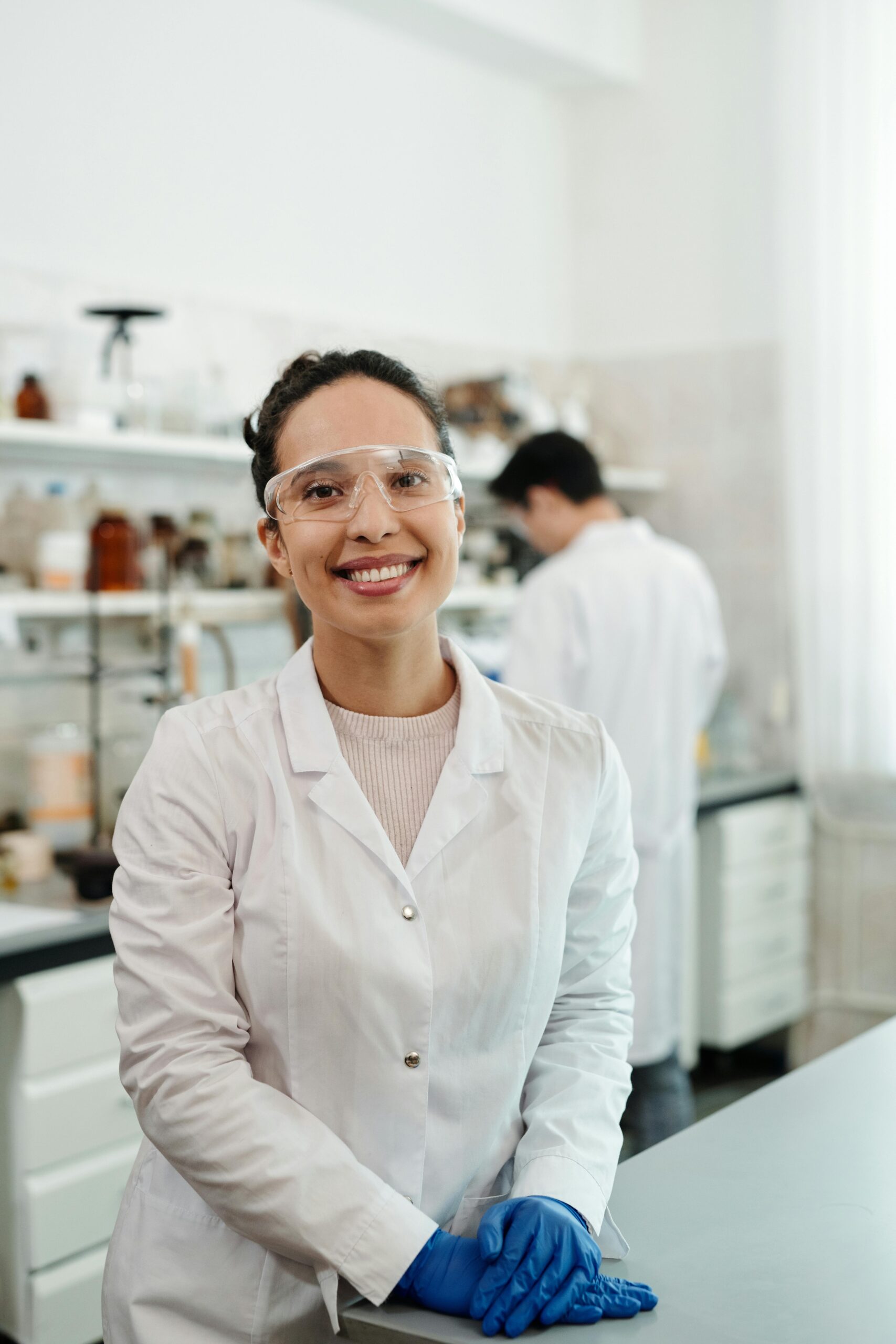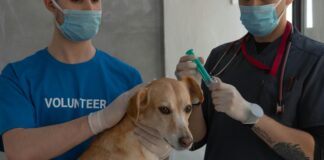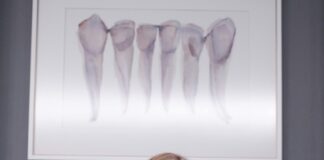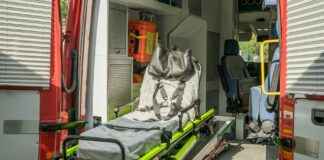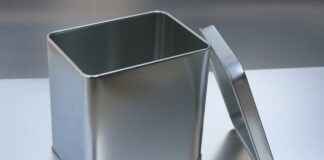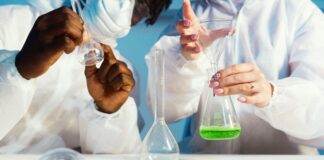Are you curious about what a clinical laboratory scientist really does behind the scenes? This fascinating profession plays a crucial role in modern healthcare, yet many people don’t fully understand its importance. Clinical laboratory scientists are the unsung heroes who perform complex tests on patient samples, providing vital data that helps doctors diagnose diseases accurately. But what exactly makes a clinical laboratory science career so exciting and in-demand today? With advancements in technology and rising needs for precise diagnostics, this field is booming like never before. Imagine working with cutting-edge equipment, analyzing blood, tissue, and other bodily fluids to uncover hidden health secrets. The question is, how can you become a successful clinical laboratory scientist and what skills do you really need? From mastering laboratory techniques to understanding emerging trends like molecular diagnostics and personalized medicine, the opportunities are endless. If you’re looking for a rewarding healthcare profession that combines science, technology, and critical thinking, then stepping into the world of clinical laboratory science might be your perfect fit. Dive deeper to explore the top reasons why pursuing a clinical laboratory scientist certification can elevate your career and make a significant impact in saving lives every day! Don’t miss out on uncovering insider tips and the latest industry trends that could transform your future.
Top 10 Career Secrets Every Clinical Laboratory Scientist Must Know in 2024

Clinical Laboratory Scientist: The Unsung Hero Behind Your Diagnosis
Okay, so you probably never thought much about the people in white coats who work behind the scenes, right? But clinical laboratory scientist roles and responsibilities are crucial in healthcare. These folks don’t just push buttons on machines; they are the brains and hands behind the diagnostic tests that help doctors figure out what’s wrong with you. Without them, well, good luck getting a proper diagnosis!
What Does a Clinical Laboratory Scientist Actually Do?
If you think a clinical laboratory scientist job description is just about mixing chemicals and looking through microscopes, you might be partly right but there’s way more to it. These professionals analyze blood, tissue, and other body fluids to detect diseases, infections, and other health conditions. They work with high-tech equipment that sometimes look like they came from sci-fi movies, and interpret results that literally save lives.
Here’s a quick breakdown of what their day might look like (not really sure why this matters, but it’s interesting):
| Task | Description | Time Spent |
|---|---|---|
| Sample Collection and Handling | Making sure specimens like blood or urine are collected properly. | 20% |
| Running Tests | Using machines and manual methods to analyze samples. | 40% |
| Result Interpretation | Checking data and making sure results are accurate and reliable. | 25% |
| Reporting and Documentation | Writing report and communicating findings to medical staff. | 15% |
Seems simple? Yeah, right! There’s a ton of responsibility packed in those percentages. If a test is done wrong, it could lead to wrong diagnosis and treatments, which is scary.
Skills and Qualifications You’ll Need (Spoiler: It’s Not Just Science Stuff)
Becoming a clinical laboratory scientist certification requirements ain’t a walk in the park. Typically, you’ll need a bachelor’s degree in medical technology or a related field, plus certification from recognized boards like ASCP or AMT. But besides book smarts, practical skills matter a lot.
Here are some must-haves:
- Attention to detail (like microscopic level, no kidding)
- Problem-solving skills (because machines break down and test results don’t always make sense)
- Communication skills (yes, they gotta explain complicated stuff to doctors and nurses)
- Ability to work under pressure (labs can get crazy busy, especially during outbreaks)
Honestly, maybe it’s just me, but I feel like these skills are underrated when people think of lab techs. They’re not just button pushers; they’re detectives of the microscopic world.
Types of Tests Commonly Performed by Clinical Laboratory Scientists
You might be curious what kind of tests these guys run every day. Here’s a small list of the usual suspects:
- Complete blood count (CBC)
- Blood chemistry panels (checking kidney, liver function)
- Microbiology cultures (finding bacteria, viruses)
- Coagulation tests (blood clotting)
- Urinalysis
- Molecular diagnostics (DNA and RNA testing)
Each test requires specific protocols and equipment. For instance, advanced clinical laboratory scientist molecular diagnostics techniques are becoming increasingly important in identifying genetic disorders and infectious diseases. It’s wild stuff, but also very technical.
Practical Insight: Sample Handling Tips
One thing that even many healthcare pros overlook is the importance of sample handling. A poorly handled specimen can ruin the whole test. Here are some quick tips from the trenches:
- Always label samples clearly and double-check patient info.
- Store specimens at the right temperature (not too hot, not too cold).
- Transport samples quickly to avoid degradation.
- Use proper personal protective equipment (PPE) to avoid contamination.
If you mess up here, well, you might as well not do the test at all.
How COVID-19 Changed the Role of Clinical Laboratory Scientists
Oh boy, this is a big one. The pandemic threw a massive spotlight on clinical laboratory scientist in pandemic response roles. Suddenly, these professionals were the front line in testing millions of COVID samples daily. The pressure was insane, and so was the need for quick, accurate testing.
Lab scientists had to adapt to new testing methods like PCR and rapid antigen tests, often working overtime. Not to mention, they were dealing with supply shortages, constantly changing protocols, and the stress of being exposed to the virus themselves.
Here’s a quick table showing differences before and during the pandemic:
| Aspect | Before COVID-19 | During COVID-19 |
|---|---|---|
| Test Volume | Moderate | Extremely high |
| Test Types | Variety of routine tests | Mainly viral detection (PCR, antigen) |
| Work Hours | Usually shifts | Extended shifts, overtime common |
| Safety Protocols | Standard lab safety | Enhanced PPE, bio |
How to Become a Successful Clinical Laboratory Scientist: Step-by-Step Guide
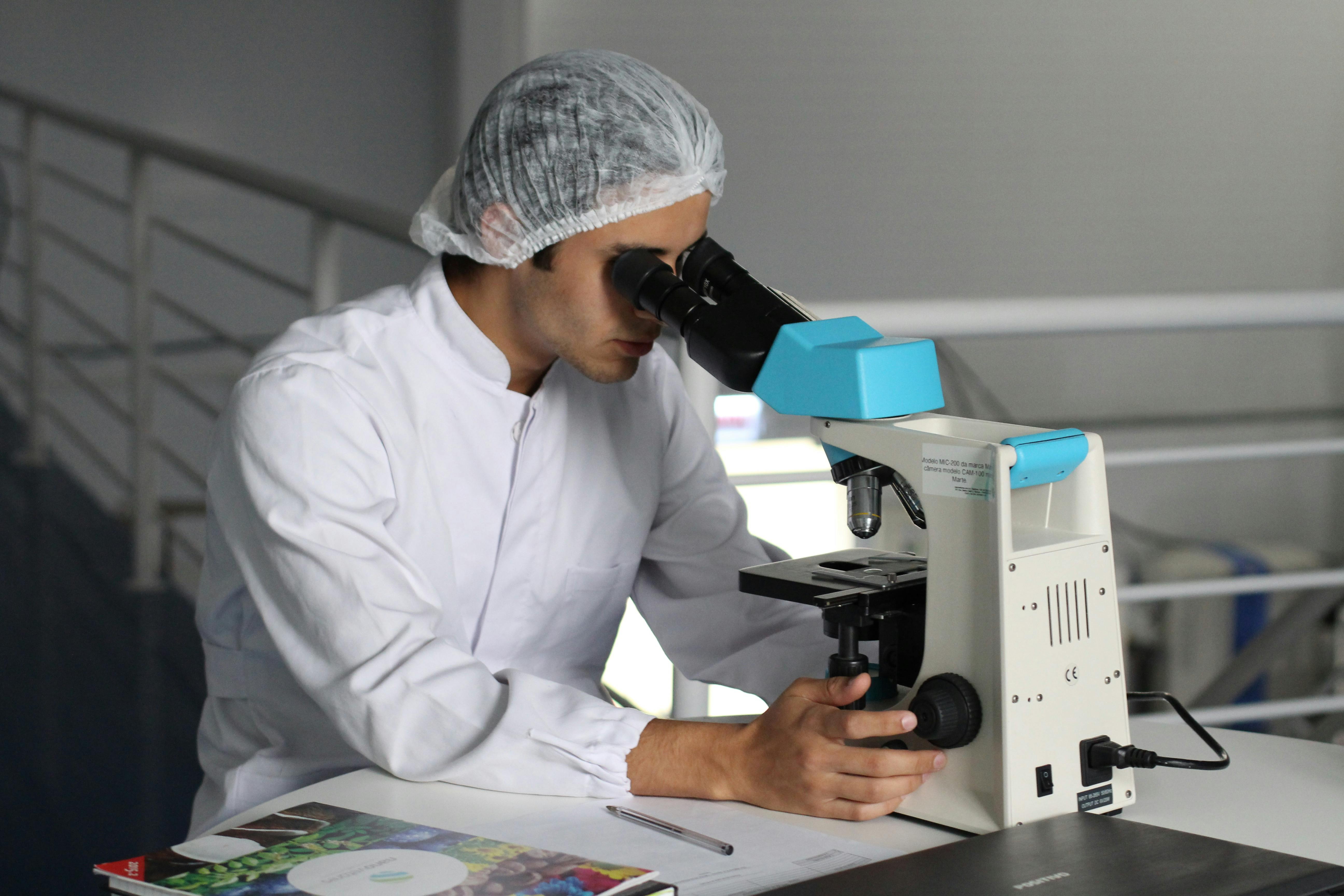
Clinical Laboratory Scientist: The Unsung Hero of Diagnostics
When you think about healthcare, what pops into your mind? Doctors, nurses, maybe the fancy MRI machines? But rarely do people give a thought to the clinical laboratory scientist — those folks who actually make the magic happen behind the scenes. Honestly, without them, diagnostics would be a shot in the dark. Not really sure why this matters, but I feel like they deserve way more credit than they get.
Who is a Clinical Laboratory Scientist, Anyway?
Simply put, a clinical laboratory scientist (sometimes called medical technologist) is the person who analyze bodily fluids, tissues, and other specimens to provide crucial data for diagnosing and treating diseases. They work with blood, urine, and any other samples you can imagine. Picture them as the Sherlock Holmes of the medical world, except their magnifying glass is a microscope.
Here’s a quick list of what they do:
- Perform complex tests on blood, urine, and other bodily fluids
- Operate and maintain laboratory instruments
- Analyze test results and report findings to doctors
- Ensure lab safety and quality control standards are met
Why Being a Clinical Laboratory Scientist is More Complicated Than You Think
If you think this job is just “looking at slides all day,” think again. The amount of responsibility on their shoulders is massive. One tiny error can mess up a diagnosis, which can lead to wrong treatment. Yikes. Plus, these professionals must stay updated with the latest advancements, because medicine is always evolving.
| Task | Description | Frequency |
|---|---|---|
| Sample Collection | Sometimes involved, but mostly samples come from nurses or phlebotomists | Daily |
| Test Analysis | Running tests like CBC, blood glucose, microbiology cultures | Multiple times daily |
| Equipment Calibration | Ensuring machines are working properly | Weekly or as needed |
| Data Reporting | Communicating results to physicians | Daily |
Education and Skills Needed (Spoiler: It’s Not a Walk in the Park)
To become a clinical laboratory scientist, you typically need a bachelor’s degree in medical technology or a related field. Some places want a master’s degree, but that’s not always mandatory. Certification from an accredited body like the American Society for Clinical Pathology (ASCP) is often expected.
Now, if you think book smarts alone will get you there, think twice. These scientists must have razor-sharp problem-solving skills, good communication (because they talk to doctors, not just machines), and an eye for detail sharper than a hawk.
Common Types of Tests Conducted by Clinical Laboratory Scientists
Let me throw some jargon your way, just so you sound cool at parties (or not):
- Complete Blood Count (CBC): Measures the cells in your blood — red, white, platelets, you name it.
- Blood Chemistry Tests: Check levels of chemicals like glucose, electrolytes, enzymes.
- Microbiology Cultures: Growing bacteria or fungi to identify infections.
- Immunology Tests: Detect antibodies or antigens to diagnose diseases.
A Day in the Life — What Really Happens in the Lab?
Now, maybe it’s just me, but I imagine their day is a mix of science experiments and detective work. Here’s a rough breakdown:
| Time | Activity |
|---|---|
| 8:00 AM | Review pending tests and prepare reagents |
| 9:00 AM – 12:00 PM | Process blood samples, run automated analyzers |
| 12:00 PM – 1:00 PM | Lunch (finally!) |
| 1:00 PM – 3:00 PM | Microbiology cultures and microscope work |
| 3:00 PM – 5:00 PM | Data analysis, report generation, and troubleshooting |
Challenges They Face (Because Nothing’s Ever Easy)
Running a clinical lab isn’t all sunshine and rainbows. Equipment breaks down (always at the worst time), samples get mislabeled, and sometimes the workload is just insane. Not to mention, the pressure of ensuring accuracy can be mentally exhausting. Seriously, imagine if your coffee machine broke down right before your morning rush — multiply that feeling by a hundred.
Why You Should Care About Clinical Laboratory Scientists
You may not see them, but these people save lives every day. The next time you get a blood test, remember it’s these behind-the-scenes warriors who make sure the results are right. So yeah, if you wanna google “career as a clinical laboratory scientist,” just know you’re looking at one of the most crucial jobs in healthcare.
Practical Insights for Aspiring Clinical Laboratory Scientists
- Always double-check specimen labels; mix-ups are a nightmare.
- Learn how to operate different types of lab equipment —
Clinical Laboratory Scientist Salary Trends: What You Can Expect in Today’s Market

Clinical Laboratory Scientist: The Unsung Hero of Healthcare
When you think about healthcare, most peoples imagine doctors, nurses, or maybe even paramedics. But have you ever stop and wonder who behind the scenes doing those crucial lab tests that guide medical decision? That’s where the clinical laboratory scientist comes in, playing a role that’s sometimes overlooked but absolutely vital.
What is a Clinical Laboratory Scientist?
In simple terms, a clinical laboratory scientist (sometimes called medical laboratory technologist) is a professional who performs complex tests on patient samples such as blood, urine, or tissue. These tests help diagnose diseases, monitor treatments, and even detect infections before symptoms appear. Without them, doctors would be flying blind in many cases.
The day to day work of a clinical laboratory scientist involves analyzing samples using high-tech equipment and manual techniques. They must have a sharp eye for detail and a strong understanding of biology, chemistry, and sometimes microbiology or molecular biology. It’s not just pushing buttons; there’s an art and science to interpreting results.
Why This Job Matters (Even If You Don’t Realize)
Maybe it’s just me, but I feel like most people don’t think twice about the lab work that goes into a simple blood test. But imagine a scenario where the lab results are wrong — patient could get wrong diagnosis, wrong treatment, or no treatment at all. Scary, right? So, the accuracy and reliability from clinical laboratory scientist jobs is critical.
Here’s a quick table showing some common tests done and what they’re used for:
| Test Name | Sample Type | Purpose | Clinical Relevance |
|---|---|---|---|
| Complete Blood Count (CBC) | Blood | Evaluates overall health, detects anemia | Diagnoses infections, blood disorders |
| Blood Glucose Test | Blood | Measures sugar levels | Helps diagnose diabetes |
| Urinalysis | Urine | Checks for urinary tract infections or kidney problems | Detects infections, kidney disease |
| Culture & Sensitivity | Tissue/Fluid | Identifies infectious agents and antibiotic susceptibility | Guides treatment of infections |
Training and Skills Needed
To become a clinical laboratory scientist, one usually need at least a bachelor’s degree in clinical laboratory science or related field. Certification is often required — like from the American Society for Clinical Pathology (ASCP) or equivalent bodies in other countries. Not gonna lie, it’s a pretty intense educational path. You gotta learn everything from hematology to immunology, and sometimes you have to do practical internships that are no walk in the park.
Here’s a rough skill checklist for those interested:
- Strong analytical and critical thinking skills
- Attention to detail (you can’t afford slip-ups here)
- Good communication skills (because sometimes you explain results to doctors)
- Knowledge of lab safety and quality control procedures
- Ability to operate modern laboratory instruments and software
Challenges Faced by Clinical Laboratory Scientists
I mean, what job doesn’t have its headaches, right? For clinical laboratory scientist career paths, one big issue is dealing with heavy workloads and sometimes understaffed labs. Plus, the pressure to deliver accurate results fast can be nerve-wracking. Mistakes can cost lives, so there’s little room for error.
And let’s talk about the pay — it varies widely depending on country, experience, and workplace. Some might say it’s not as glamorous or well-paid as other medical professions, but honestly, the impact they have is huge.
Practical Insights: A Day in the Life
Let me try to paint a picture here:
- 7:30 AM: Arrive at the lab, check equipment calibration, review pending test orders.
- 8:00 AM: Receive and log patient samples, label everything carefully.
- 9:00 AM – 12:00 PM: Run tests on analyzers, manually review abnormal results.
- 12:00 PM: Quick lunch (if lucky, sometimes skipped on busy days).
- 12:30 PM – 3:00 PM: Prepare culture plates, incubate samples, microscope work.
- 3:00 PM – 5:00 PM: Double-check results, enter data into lab information system, communicate urgent findings to physicians.
And repeat. Sounds kinda monotonous? Maybe, but it’s important work that keeps hospitals running smoothly.
Interesting factoid: The rise of automation and AI in labs is changing the game, but don’t worry, the clinical laboratory scientist role is evolving, not disappearing. Machines still need human eyes and brains to interpret complex data and troubleshoot problems.
Long Tail Keywords to Keep in Mind
If you’re looking into this field or want to optimize content about it, here’s some useful keywords that might help:
- clinical laboratory scientist job description
- clinical laboratory scientist salary range
- clinical laboratory scientist certification requirements
Unlocking the Power of Advanced Diagnostics: The Role of Clinical Laboratory Scientists

Understanding the Role of a Clinical Laboratory Scientist: What They Really Do?
So, you been wondering what a clinical laboratory scientist actually does all day in those white coats? Well, lemme tell you, it’s way more than just poking around with some test tubes and microscopes. These folks are like the unsung heroes of the medical world, the behind-the-scenes wizards that make diagnosis and treatment possible. Without them, doctors would be flying blind, kinda like trying to drive a car with no headlights at night.
First off, a clinical laboratory scientist job description is pretty broad. They collect, analyze, and interpret biological samples. Blood, urine, tissues – you name it. But it ain’t just about slapping a slide under a microscope. They run complex tests that detect diseases, monitor patient health, and even help in research for new treatments. Not really sure why this matters, but they also have to keep their lab super sterile and organized, or else the whole thing could be a disaster.
What Skills a Clinical Laboratory Scientist Must Have?
Here’s a quick rundown table to show you the key skills needed:
| Skill | Why It Matters |
|---|---|
| Attention to Detail | Even a tiny error can mess up test results |
| Analytical Thinking | They need to interpret complex data sets |
| Communication Skills | Explaining results clearly to doctors or nurses |
| Technical Proficiency | Handling high-tech lab equipment and software |
| Problem-Solving | Fixing issues with tests or equipment quickly |
Honestly, maybe it’s just me, but I feel like the communication part gets overlooked a lot. People think lab work is all about science and machines, but explaining what the heck the test results mean is a huge part of their job.
Education Pathway for Clinical Laboratory Scientists
If you wanna become a clinical laboratory scientist certification requirements, you’re looking at quite a bit of schooling. Usually, it starts with a bachelor’s degree in medical laboratory science, biology, or chemistry. Then, you gotta pass a certification exam, like the ASCP (American Society for Clinical Pathology) or equivalent. Some places might require a master’s degree or additional training, but the bachelor’s plus certification is the sweet spot.
Here’s a simplified educational roadmap:
- Obtain Bachelor’s Degree (4 years)
- Complete Clinical Internship (6-12 months)
- Pass Certification Exam
- Obtain State Licensure (if required)
- Continue Education for Recertification
The whole process can feel like climbing a mountain, especially with all the lab reports and practical exams. But, hey, nothing worth having comes easy, right?
Day-to-Day Responsibilities: What’s It Like?
You might think a clinical laboratory scientist daily routine is boring or repetitive, but that’s far from truth. One day, you might be running routine blood counts; next day, you could be troubleshooting a malfunctioning analyzer. Here’s a sample schedule:
| Time | Task |
|---|---|
| 7:30 – 8:30 | Setup and calibration of lab equipment |
| 8:30 – 12:00 | Testing patient samples |
| 12:00 – 1:00 | Lunch break (finally!) |
| 1:00 – 3:30 | Data analysis and result validation |
| 3:30 – 4:30 | Reporting results and communicating with doctors |
| 4:30 – 5:00 | Cleaning and restocking supplies |
Quite packed, huh? And don’t forget, there’s always that one sample that just refuses to cooperate, making you wanna pull your hair out.
Technology and Tools: What They Use
A clinical laboratory scientist equipment list can be pretty intimidating. From centrifuges to spectrophotometers, and automated analyzers, they use some seriously advanced machines. Then there’s software to manage patient data and test results. If you think it’s just about mixing chemicals, think again.
| Equipment | Purpose |
|---|---|
| Microscope | Examining cells and microorganisms |
| Centrifuge | Separating components of blood or other samples |
| PCR Machine | Amplifying DNA for genetic testing |
| Automated Analyzers | Running routine blood and urine tests |
| ELISA Reader | Detecting antibodies or antigens in samples |
Not all labs have the same gadgets though; some smaller labs might still use more manual methods, which, honestly, sounds like a nightmare in this day and age.
Challenges in the Clinical Laboratory Field
Hey, it’s not all sunshine and rainbows. Being a clinical laboratory scientist challenges include dealing with high pressure to avoid errors, long hours, and sometimes a very stressful environment. Plus
7 Game-Changing Skills That Will Boost Your Clinical Laboratory Scientist Career
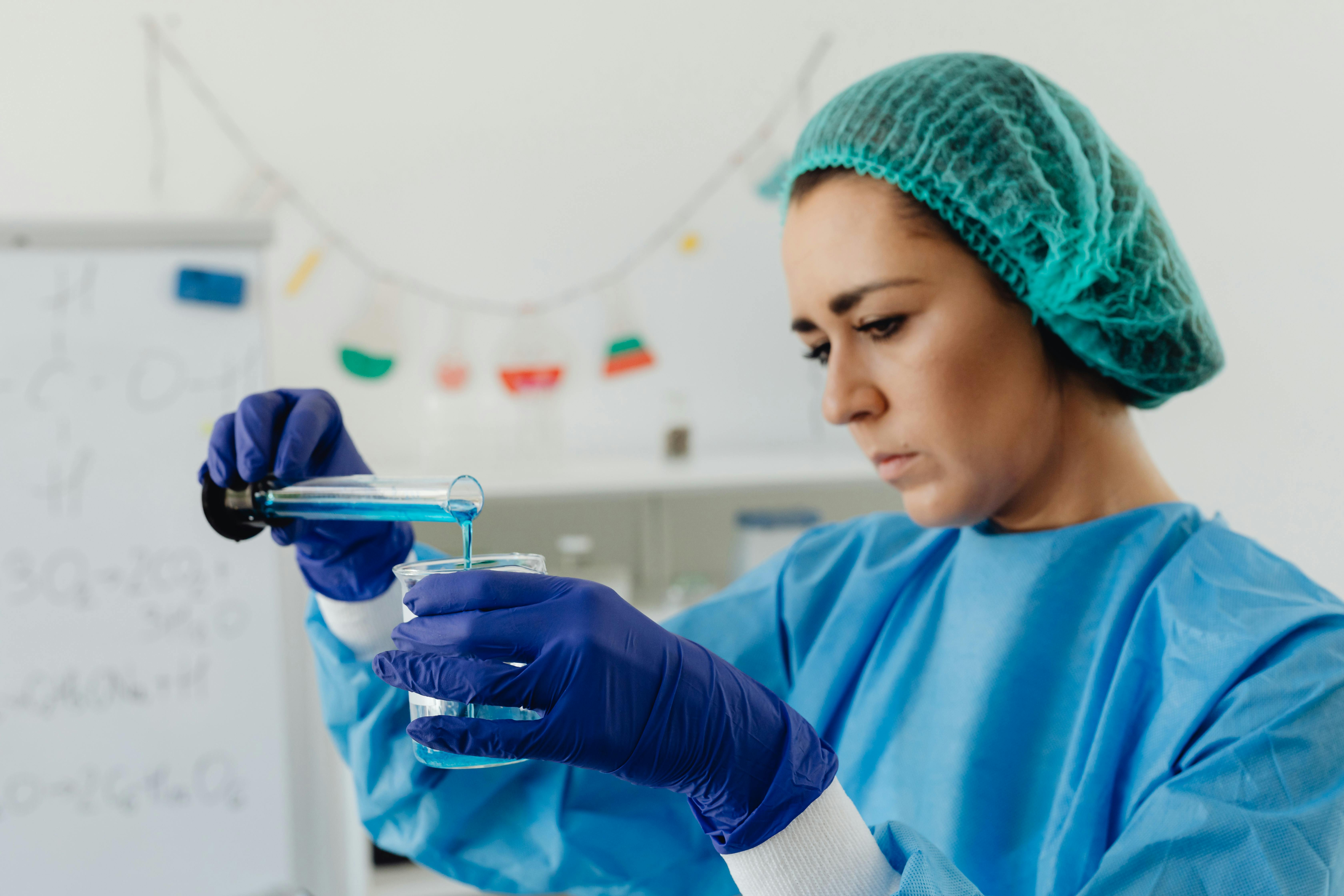
The Role of a Clinical Laboratory Scientist: More Than Just Test Tubes
So, you ever wonder what a clinical laboratory scientist actually does all day? If you’re thinking, “They just mix some chemicals and look at stuff under a microscope,” then, well, you’re kinda right but also totally missing the point. These folks are the unsung heroes behind many diagnoses, and honestly, without them, doctors would be flying blind most of the time. Not really sure why this matters, but the world kinda depends on their findings.
What is a Clinical Laboratory Scientist Anyway?
A clinical laboratory scientist (sometimes called medical laboratory scientist or MLS) is the person who tests blood, urine, tissues, and other body fluids to help diagnose diseases. They work in hospitals, clinics, research labs, and sometimes even in forensic labs—yeah, like crime shows but real. Their job involves running complex tests that detect infections, monitor chronic diseases, and even screen for cancers.
They don’t just push buttons, though. These scientists must understand the science behind the tests, troubleshoot when machines act up (which is more often than you think), and validate results to ensure accuracy. Imagine if a test result says you have a disease but it’s wrong? Chaos. So, their work is kinda crucial.
Daily Tasks and Responsibilities
Here’s a quick list-ish thing of what a clinical laboratory scientist usually does:
- Collect and process specimens like blood, urine, and tissue samples.
- Perform chemical, microbiological, hematological, and molecular tests.
- Maintain and calibrate sophisticated laboratory equipment.
- Analyze test results and report findings to doctors.
- Ensure lab safety and compliance with regulations.
- Train junior staff and sometimes students (because knowledge is power, right?).
If you think this sounds like a lot, you’re not wrong. Their day never really ends because lab results are needed ASAP, especially in emergency situations.
Educational Path and Required Skills
Getting into the field ain’t exactly a walk in the park. Most clinical laboratory scientist positions require at least a bachelor’s degree in medical laboratory science, biology, or chemistry. Then there’s certification and licensure, which varies by state and country. Sometimes they have to pass exams from organizations like the American Society for Clinical Pathology (ASCP).
Here’s a simplified table of typical requirements:
| Requirement | Details |
|---|---|
| Education | Bachelor’s degree in Medical Laboratory Science or related field |
| Certification | ASCP or equivalent |
| Licensure | Depends on state/country regulations |
| Skills | Attention to detail, critical thinking, technical skills, communication |
Not to brag, but these scientists often have to be part detective, part technician, and part scientist all rolled into one. And patience? Oh boy, you need buckets of it.
The Importance of Accuracy and Quality Control
Maybe it’s just me, but I feel like people underestimate how important accuracy is in a clinical lab. One tiny mistake and the whole diagnosis can be off. That’s why clinical laboratory scientists perform rigorous quality controls daily. This includes running control samples, calibrating instruments, and double-checking results.
Below is an example of a quality control checklist a clinical lab might use:
| Quality Control Task | Frequency | Purpose |
|---|---|---|
| Calibration of analyzers | Daily | Ensure machine accuracy |
| Running control samples | With every batch | Verify test consistency |
| Maintenance of equipment | Weekly | Prevent breakdowns |
| Documentation and logging | Continuous | Traceability and accountability |
Without these steps, errors slip through, and trust me, nobody wants to be the guy who gave a false positive for something serious.
Challenges Faced by Clinical Laboratory Scientists
Working in a lab isn’t all fun and pipettes. There are plenty of challenges, like dealing with outdated equipment (why does this ancient centrifuge still work?), handling biohazardous materials (yikes), and working long shifts, sometimes overnight. Plus, it can get a bit repetitive—imagine staring at slides or running the same test hundreds of times a day.
Also, the pressure is real. When a doctor asks for a test result in five minutes, you can’t just say, “Hold on, I’m busy.” Nope, you gotta deliver, sometimes sacrificing accuracy for speed, which no one really wants but hey, that’s life in the lab.
Future Trends in Clinical Laboratory Science
The field is evolving fast, thanks to technology advancements. Automation and AI are starting to play bigger roles, which means some of the manual tasks might be reduced. But don’t think this will replace the clinical laboratory scientist anytime soon. Machines can break down, give weird results, or just not get the nuances that a trained human can catch.
Here’s a quick look at
Exploring High-Demand Specialties for Clinical Laboratory Scientists in 2024

Clinical Laboratory Scientist: The Unsung Hero in Healthcare World
So you probably never heard about a clinical laboratory scientist in your daily life, right? Yeah, same here until I started digging deeper. These folks, they work behind the scenes, doing all the fancy tests on your blood, urine, and other samples. Without them, doctors would be like a fish out of water, guessing what’s wrong with you. Not really sure why this matters to most people, but if you ever wanna impress someone at a party, dropping the term clinical laboratory scientist jobs near me might do the trick.
What Does a Clinical Laboratory Scientist Actually Do?
Imagine a detective, but instead of looking for clues at a crime scene, they’re searching for microscopic signs of diseases in a lab. They perform tests that help diagnose everything from infections to cancer. They don’t just push buttons on machines, nope! They analyze results, check for errors, and sometimes even develop new testing methods. It’s a mix of science, technology, and a bit of art, if you ask me.
Here’s a quick rundown of the typical duties of a clinical laboratory scientist roles and responsibilities:
| Task | Description |
|---|---|
| Specimen Collection | Collect blood, tissue, or other samples |
| Testing and Analysis | Perform chemical, hematological, microbiological tests |
| Quality Control | Ensure accuracy and reliability of test results |
| Equipment Maintenance | Calibrate and maintain lab instruments |
| Data Interpretation | Analyze data to aid in diagnosis |
| Research and Development | Innovate new testing procedures |
See? It’s not just mixing stuff in test tubes like in cartoons. There’s real brain work happening here.
Education and Training: How Much Schooling You Need
This might surprise you, but becoming a clinical laboratory scientist certification requirements takes quite a bit of schooling. Usually, a bachelor’s degree in medical technology or a related field is the minimum. Then you gotta pass some certification exams to prove you know your stuff. And for those who wanna level up, a master’s degree or even a doctorate is possible, especially if you want to specialize.
Maybe it’s just me, but I feel like the education part is often overlooked because everyone thinks doctors do all the lab work. Nope, that’s the scientist’s turf. Here’s a simplified path:
- Bachelor’s degree in Clinical Laboratory Science or related field
- Clinical internship (hands-on experience)
- Certification exam (like ASCP or AMT)
- State licensure (depends where you live)
- Continuing education to stay updated
Why You Should Care About Clinical Laboratory Scientists
At first glance, you might think, “Why should I care about these lab geeks?” Well, the truth is, their work impacts nearly every medical decision made. Wrong lab results can lead to misdiagnosis, wrong treatments, or even death. Yeah, that serious. They are the gatekeepers of accurate medical data, and without them, healthcare would be a mess.
Here’s a list of some reasons why clinical laboratory scientist importance in healthcare can’t be overstated:
- Diagnosing diseases early
- Monitoring patient’s response to treatment
- Ensuring blood safety for transfusions
- Detecting outbreaks of infectious diseases
- Supporting medical research and drug development
Tools of the Trade: What Do They Use?
You’d think it’s just microscopes, right? Well, yes, but also loads more high-tech gadgets. From automated analyzers to molecular diagnostic tools, these scientists have a whole arsenal. Sometimes it seems like they’re conducting experiments for a sci-fi movie.
Check out this basic checklist of common lab equipment used by clinical laboratory scientist tools and technology:
| Equipment | Purpose |
|---|---|
| Microscope | Viewing cells and microorganisms |
| Centrifuge | Separating blood components |
| Spectrophotometer | Measuring chemical concentrations |
| Blood Gas Analyzer | Checking oxygen and carbon dioxide levels |
| PCR Machine | Detecting DNA or RNA sequences |
Honestly, it’s kinda cool how technology has revolutionized their work. But imagine having to keep all this stuff calibrated and running smoothly — talk about responsibility.
Challenges Faced by Clinical Laboratory Scientists
Life as a clinical laboratory scientist career challenges ain’t always roses. For one, the work can be super repetitive, staring at samples for hours. Also, the pressure to avoid mistakes is HUGE because even a tiny error can have major consequences. Plus, sometimes the lab environment can be hazardous due to exposure to infectious materials.
Another thing, not all labs get the funding they need, which can make upgrading equipment or hiring staff difficult. So these scientists gotta be resourceful and patient.
Here’s a quick list of common struggles:
- High workload and time
Clinical Laboratory Scientist vs. Medical Technologist: Key Differences Explained

Clinical Laboratory Scientist: What They Actually Do (And Why You Should Care)
Alright, so you probably heard the term clinical laboratory scientist tossed around in hospitals or TV shows, but what do these folks really do? I mean, they’re not the ones wearing scrubs running down the hall with a clipboard, right? Well, not exactly. These scientists are the unsung heroes behind the scenes, and honestly, without them, most diagnoses would be like shooting in the dark.
Who is a Clinical Laboratory Scientist?
A clinical laboratory scientist (sometimes called a medical laboratory technologist, but don’t get confused, they’re kinda the same) is a pro who performs complex tests on blood, urine, and other body fluids. They analyze samples to detect diseases, infections, or any abnormal conditions. Sounds fancy, but it really boils down to using machines and microscopes to get the job done.
What’s interesting is, these scientists don’t just press buttons; they interpret data and decide if there’s something wrong or not. It’s like being a detective, but instead of clues at a crime scene, they got cells, proteins, and DNA strands. Not really sure why this matters, but their work directly impacts treatment decisions, so yeah, kinda important.
Daily Tasks of a Clinical Laboratory Scientist
If you are curious about what a typical day looks like, here’s a quick rundown (not exhaustive, because no day is ever the same):
| Task | Description |
|---|---|
| Sample Collection & Preparation | Sometimes they collect samples, but mostly prepare them for analysis by processing fluids |
| Running Tests | Using automated analyzers, microscopes, and sometimes manual techniques to analyze samples |
| Quality Control | Ensuring machines and results are accurate; no one wants false positives or negatives, duh! |
| Data Interpretation | Reviewing results and cross-checking with normal ranges to detect abnormalities |
| Reporting Results | Writing reports for doctors or inputting data into hospital systems |
It’s pretty intense, especially when you have to manage multiple samples at once. Imagine juggling 50 blood samples and making sure none get mixed up. Yikes!
Skills You Need (Besides Being Good With Microscopes)
Being a clinical laboratory scientist requires a mix of smarts and patience. Here’s some skill that are a must-have:
- Attention to details (like a hawk eye, seriously)
- Strong understanding of biology and chemistry (the basics, but then some)
- Good communication skills (because you gotta explain complex results to doctors or sometimes patients)
- Problem-solving skills (machines break down, samples get contaminated, it’s a mess sometimes)
- Time management (because deadlines are real and urgent)
Maybe it’s just me, but I feel like these scientists deserve a medal for putting up with the pressure and still managing to keep tests accurate.
Education and Certification
So how do you become a clinical laboratory scientist? It’s not like you just wake up one day and decide to be one.
- Typically, a bachelor’s degree in medical laboratory science, biology, or related field is required.
- After that, you gotta pass certification exams like the ASCP (American Society for Clinical Pathology) or equivalent.
- Some states or countries require licensure too, so better check your local rules.
- Oh, and continuing education is a thing because medicine and technology keep evolving, and you can’t stay stuck in the past.
| Step | Description | Duration |
|---|---|---|
| Bachelor’s Degree | Focus on medical lab science or biology | 4 years |
| Certification Exam | Pass ASCP or other relevant certification | Few months preparation |
| Licensure (Optional) | State or country-specific license | Varies |
| Continuing Education | Regular courses or workshops to stay updated | Ongoing |
Importance of Clinical Laboratory Scientists in Healthcare
Let me tell you, the role these folks play is massive. Without their accurate testing and interpretation, doctors would be guessing. Think about diseases like diabetes, HIV, or cancer — the diagnosis and monitoring heavily depend on lab results.
Not to mention, during pandemics (like the infamous COVID-19), clinical laboratory scientists were at the frontline, running thousands of tests daily to track and control outbreaks. Pretty heroic stuff if you ask me.
Challenges They Face (Because Life Ain’t Easy)
Working in a lab sounds neat, but it has its downsides:
- Long hours and sometimes overnight shifts (hello, night owls!)
- Exposure to hazardous materials and infectious agents (safety goggles and gloves are your best friends)
- Stress of maintaining accuracy under pressure (one slip-up can mess up a patient’s whole treatment)
- Constant need to adapt to new technology and protocols (they gotta keep learning or
Essential Certifications and Licenses Every Clinical Laboratory Scientist Needs Now
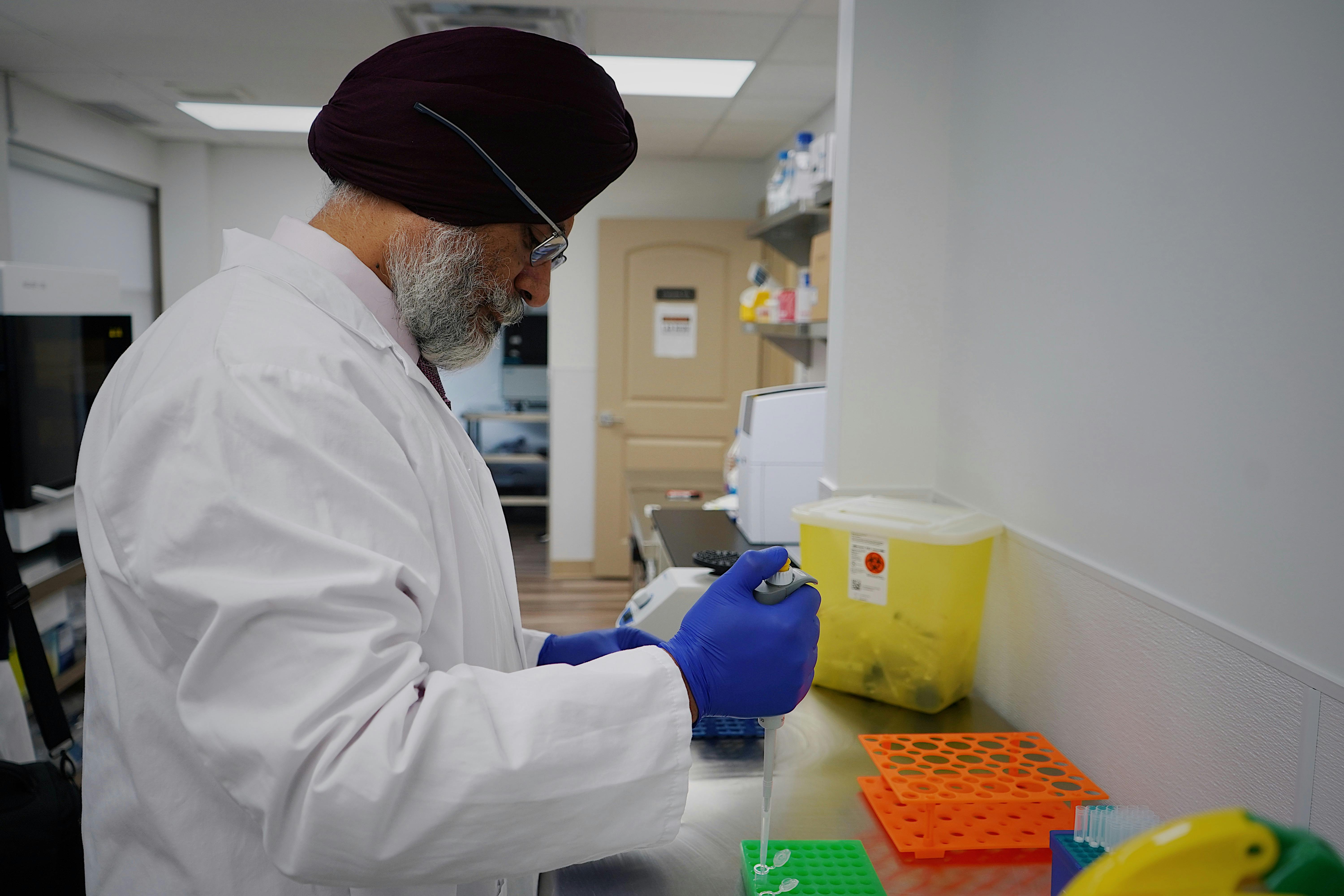
Clinical Laboratory Scientist: The Unsung Hero of Healthcare
So, you might be wonderin’, what exactly does a clinical laboratory scientist do? Well, let me tell ya, it’s not just poking around test tubes all day like some kinda mad scientist. These folks are the backbone of diagnostic medicine, or so I’ve heard. They analyze bodily fluids, tissues, and other samples to help doctors figure out what’s wrong with patients. Sounds kinda important, right? Spoiler alert: it is.
What is a Clinical Laboratory Scientist?
A clinical laboratory scientist (sometimes called a medical technologist, but don’t get confused) is trained to perform complex tests that detect diseases, infections, and other health issues. They work in hospitals, clinics, or independent labs. The job requires precision, because even the smallest mistake can lead to wrong diagnosis or treatment.
Now, not really sure why this matters, but these scientists often use some fancy equipment like microscopes, centrifuges, and automated analyzers. If you think it’s all about mixing chemicals, nah, it’s way more technical than that.
Day-to-Day Duties (or what they really do)
Here’s a quick run-down of what a clinical laboratory scientist might do in a typical day:
| Task | Description | Importance Level |
|---|---|---|
| Sample Collection & Preparation | Handling blood, urine, or tissue samples | High |
| Analyzing Samples | Using instruments to run tests | Critical |
| Data Interpretation | Reading results and spotting abnormalities | Very Important |
| Reporting Findings | Communicating results to physicians | Essential |
| Quality Control | Ensuring accuracy of tests and equipment | Vital |
You probably didn’t know that quality control is a huge part of their job, right? I mean, it’s not like you wanna get a false positive for, say, diabetes because the machine was dirty or something.
Education and Certification
Becoming a clinical laboratory scientist isn’t a walk in the park. Usually, you need at least a bachelor’s degree in medical technology or a related field. Then, many states or employers require certification from organizations like the American Society for Clinical Pathology (ASCP).
Maybe it’s just me, but I feel like sometimes people overlook how much schooling goes into this career. You’re basically training to be a detective for the human body. And yes, you’ll probably have to take some exams that make you wanna pull your hair out.
Skills Needed to Succeed
If you think this job is just about science, you’re only half-right. Here’s some skills a clinical laboratory scientist should have:
- Attention to detail (because missing a decimal point can be disaster)
- Critical thinking (you gotta know when something looks fishy)
- Communication skills (you’re a bridge between lab and doctor)
- Technical proficiency (operating complex machines ain’t easy)
- Patience (waiting for test results can be agonizing)
And don’t forget, sometimes you gotta work odd hours or weekends. Labs don’t exactly close just because it’s 5 PM or a holiday.
Different Specialties in Clinical Laboratory Science
The field is pretty broad. Some lab scientists specialize in areas like:
- Hematology (study of blood)
- Microbiology (bacteria and viruses)
- Clinical Chemistry (chemical analysis of body fluids)
- Immunology (immune system related tests)
- Molecular Diagnostics (DNA and RNA testing)
Here’s a quick table showing examples of tests done in each specialty:
| Specialty | Common Tests | Purpose |
|---|---|---|
| Hematology | Complete Blood Count (CBC) | Detect anemia, infection, etc. |
| Microbiology | Culture and Sensitivity | Identify pathogens |
| Clinical Chemistry | Blood glucose, cholesterol tests | Check for metabolic diseases |
| Immunology | Allergy testing, autoimmune panels | Detect immune disorders |
| Molecular Diagnostics | PCR tests, genetic screening | Identify genetic mutations |
Not all heroes wear capes, but these specialists sure save lives in their own way.
Challenges Faced by Clinical Laboratory Scientists
If you think their work is glamorous, think again. The job can get pretty stressful. Deadlines, high stakes, and sometimes dealing with cranky equipment that just refuses to cooperate. Not to mention, lab scientists rarely get the spotlight they deserve. Doctors get the pats on the back, but who’s behind the scenes? Yup, the lab crew.
Also, exposure to infectious materials is a risk, so safety protocols are strict. Sometimes, it feels like you’re in a sci-fi movie with all the protective gear you gotta wear.
Why Should You Care About Clinical Laboratory Scientists?
I mean, you might be wondering why
How AI and Automation Are Revolutionizing the Clinical Laboratory Scientist Profession
The Role of a Clinical Laboratory Scientist: More Than Just Test Tubes and Microscopes
When you hear the term clinical laboratory scientist, you might picture someone wearing a white lab coat, peering into microscopes all day long. Well, that’s part of the gig, but honestly, there is way more to these professionals than just that. They are the unsung heroes behind many medical diagnoses, and if you’re wondering what exactly they do, you’re in the right place. Spoiler alert: It involves a lot of science, a dash of detective work, and sometimes a pinch of frustration.
What Does a Clinical Laboratory Scientist Really Do?
Clinical laboratory scientists (CLS) perform a variety of tests on patient samples like blood, urine, and tissue. These tests help doctors understand what’s wrong with a patient, or whether a treatment is working. Without these test results, the medical team is basically flying blind. So yeah, these folks are pretty important.
But wait, it’s not just about pushing buttons on fancy machines. A CLS must analyze data, interpret results, and sometimes troubleshoot when equipment goes haywire (which honestly, happens more often than you’d think). They also ensure quality control and maintain lab safety protocols. So, if you think this job is a breeze, think again!
Here’s a quick list of typical duties of a clinical laboratory scientist:
- Collect and prepare samples for testing
- Operate complex laboratory instruments
- Perform chemical, microscopic, and bacteriological analyses
- Interpret and report test results
- Maintain and calibrate equipment
- Follow strict safety and quality control guidelines
Not really sure why this matters, but many people confuse CLS with medical technologists or lab technicians. While the roles overlap, CLS typically have more training and responsibilities — like analyzing complex data and validating results.
Educational Pathway to Become a Clinical Laboratory Scientist
If you want to be a clinical laboratory scientist, you’ll need at least a bachelor’s degree in medical technology, clinical laboratory science, or a related field. Some folks might go for a master’s degree, but it’s not a must for entry-level jobs. Certifications are also important, and organizations like the American Society for Clinical Pathology (ASCP) offers certification exams.
Here’s a basic educational timeline in table form — just so you can see what you’re up against:
| Step | Description | Duration | Notes |
|---|---|---|---|
| Bachelor’s Degree | Major in Clinical Laboratory Science or related | 4 years | Core science courses required |
| Clinical Internship | Hands-on lab training | 6-12 months | Usually part of degree program |
| Certification Exam | ASCP or equivalent certification | Varies | Required for many jobs |
| Continuing Education | Ongoing training and recertification | Every 1-3 years | Keeps skills up to date |
Honestly, the internship part can be both exciting and nerve-wracking. Imagine working with real patient samples under supervision — no pressure, right?
Tools and Techniques Used by Clinical Laboratory Scientists
There’s a whole arsenal of equipment a CLS uses. From microscopes to automated analyzers, the lab is like a mini factory. But maybe it’s just me, but I feel like this stuff gets overlooked. People only see the doctor and nurse, but these machines and the people who run them are critical for accurate diagnosis.
Below is a brief overview of common tools:
| Equipment | Purpose | Fun Fact |
|---|---|---|
| Microscope | Examines cells, bacteria, and parasites | Can magnify up to 1000x |
| Centrifuge | Separates blood components | Spins at thousands rpm’s |
| Spectrophotometer | Measures light absorption in samples | Used in blood chemistry tests |
| Automated Analyzers | Perform multiple tests simultaneously | Speeds up lab work |
| PCR Machine | Amplifies DNA for genetic testing | Crucial for detecting viruses |
Practical Insights from the Lab
Working as a clinical laboratory scientist is not all glamorous. Sometimes, you get weird samples (think: what did this person eat last night?), or the machines just refuse to cooperate. Patience and attention to detail are key. One slip-up and the test results could be wrong, leading to misdiagnosis — yikes!
Also, labs can be high-stress environments. Deadlines are tight, especially in hospitals where doctors need results fast. So, if you’re thinking of this career, prepare for fast-paced work and lots of multitasking.
Here’s a quick checklist for aspiring CLS to keep in mind:
- Always double-check
Top 5 Challenges Clinical Laboratory Scientists Face and How to Overcome Them
Clinical Laboratory Scientist: The Unsung Hero of Healthcare World
If you ever wonder who the heck actually makes sure your blood test results are not just some random numbers, then you should know about the clinical laboratory scientist. These folks are like the behind-the-scenes detectives of the medical world. They work in labs, poking around specimens, running tests and making sure doctors get the right info to treat you. Not really sure why this matters, but without them, well, your doctor would be kinda flying blind.
What Does a Clinical Laboratory Scientist Actually Do?
So, what does a clinical laboratory scientist do on a daily basis? You might think it’s just mixing some chemicals and staring at microscopes all day, but it’s way more complicated than that. They analyze blood, urine, tissues, and other body fluids to detect diseases, infections, and all sorts of health problems. Sometimes they use high-tech machines, sometimes it’s old school microscope work.
Here’s a quick break down in a table to make it less boring:
| Task | Description |
|---|---|
| Specimen Collection | Sometimes they collect, but often nurses do it. |
| Sample Preparation | Preparing the specimen to be tested (could be tricky). |
| Running Diagnostic Tests | Using machines to check for bacteria, viruses, and more. |
| Data Analysis | Interpreting the test results and spotting abnormalities. |
| Reporting Results | Sending info to doctors, who then decide what’s next. |
| Quality Control & Maintenance | Ensuring all machines are working properly (not easy!). |
Skills You Need (or Should Have) to be a Clinical Laboratory Scientist
Becoming a clinical laboratory scientist isn’t just about loving microscopes and test tubes. You gotta have some serious brainpower and attention to detail because a tiny mistake could mess up the whole diagnosis. Plus, you need to be good with computers and lab equipment, because almost everything now runs on digital systems. Maybe it’s just me, but I feel like this job also needs a bit of patience — those machines don’t always work on the first try.
Here’s a list of essential skills:
- Strong Analytical Thinking
- Attention to Detail (no, seriously, double-check everything)
- Technical Knowledge of Lab Equipment
- Communication Skills (for reporting and teamwork)
- Problem Solving (when tests don’t go as planned)
- Time Management (labs can get super busy)
The Educational Path to Becoming a Clinical Laboratory Scientist
If you’re thinking about diving into this career, here’s some practical info. You usually need at least a bachelor’s degree in clinical laboratory sciences or a related field. Some places want you to be certified too, which means passing exams like the ASCP (American Society for Clinical Pathology) board. There are also associate degrees, but they usually land you in a technician role, not a full scientist.
Check this simple pathway below:
| Step | Description |
|---|---|
| High School Diploma | Focus on biology, chemistry, and math. |
| Bachelor’s Degree | In clinical laboratory science or medical technology. |
| Certification (Optional) | ASCP or other professional certifications. |
| On-the-Job Training | Hands-on experience in hospital or private labs. |
What’s It Like Working as a Clinical Laboratory Scientist?
Oh boy, working as a clinical laboratory scientist can be a roller coaster. You’re mostly in a lab, which means less people interaction compared to doctors or nurses. But don’t be fooled — the pressure is real. Deadlines to get results fast, machines breaking down, and sometimes dealing with gross samples (yeah, sometimes you gotta deal with nastiness like blood clots or funky fluids).
Also, shift work is common, especially in hospitals that run 24/7. Night shifts can be brutal, but hey, someone’s gotta do it.
Common Tests Performed by Clinical Laboratory Scientists
Just to give you a flavor, here is a quick list of common tests these scientists handle:
- Complete Blood Count (CBC)
- Blood Chemistry Panels
- Urinalysis
- Microbiology Cultures (to find bacteria or fungi)
- Coagulation Tests (blood clotting)
- Molecular Diagnostics (DNA/RNA testing)
Maybe it’s just me, but these sound complicated enough to keep you on your toes every day.
Challenges Faced by Clinical Laboratory Scientists
Like any job, there are some challenges. For starters, the work can get repetitive, which might bore some people. Also, the responsibility is huge — a wrong result can lead to misdiagnosis. Plus, labs sometimes have budget cuts, meaning older equipment or staff shortages.
And honestly, not many people outside the medical field even know what a clinical laboratory scientist does, so appreciation can be low. But if you’re
Career Growth Hacks: How Clinical Laboratory Scientists Can Land Their Dream Job
Clinical Laboratory Scientist: The Unsung Hero of Healthcare Industry
If you ever wonder who’s behind the scenes making sure your blood tests, urine analysis, and other diagnostic exams are accurate, then you gotta meet the clinical laboratory scientist. Not really sure why this matters, but these folks are the backbone of modern medicine. They don’t get the glitz or the fame, but without them, doctors would be shooting in the dark, literally.
What is a Clinical Laboratory Scientist?
A clinical laboratory scientist (sometimes called CLS or medical technologist) is a healthcare professional trained to perform complex tests on patient samples. They analyze blood, tissue, and other body fluids to detect diseases, infections, and other medical conditions. Honestly, it’s a job that demand precision, patience, and a keen eye for detail, but people often overlook it.
Main Responsibilities
- Collecting samples (blood, urine, etc) from patients or receiving them from nurses.
- Performing tests using various instruments and technologies.
- Interpreting the test results and reporting findings to physicians.
- Maintaining and calibrating lab equipment to ensure accuracy.
- Following strict safety and quality control protocols (which sometimes seems like overkill, but hey, it’s important).
Here’s a quick table to breakdown typical duties and tools used by a clinical laboratory scientist:
| Responsibility | Description | Common Equipment |
|---|---|---|
| Specimen Collection | Gathering samples carefully to avoid contamination | Needles, collection tubes |
| Analysis | Running tests like CBC, blood chemistry, microbiology | Hematology analyzers, microscopes |
| Quality Control | Ensuring tests are reliable through standards | Control samples, calibration kits |
| Reporting | Documenting and communicating results | Lab information systems |
Education and Training
To become a clinical laboratory scientist, one usually need a bachelor’s degree in medical technology, clinical laboratory science, or a related field. Some countries or states require certification or licensing — not really sure why this matters, but probably to keep the quacks out. Training involve rigorous coursework in biology, chemistry, microbiology, and hands-on lab experience. Some folks also pursue a master’s degree or specialized certifications to boost their career.
The typical educational path looks something like this:
- Bachelor’s Degree (4 years)
- Clinical Internship (6-12 months)
- Certification Exam (ASCP, AMT, or other boards)
Some places offer combined programs or accelerated tracks, but be ready to hit the books hard!
Day in the Life of a Clinical Laboratory Scientist
Maybe it’s just me, but I feel like the day of a clinical laboratory scientist is equal parts exciting and monotonous. Imagine staring at test tubes and slides all day, but you’re also the detective who finds the clue for a patient’s diagnosis.
A typical day might include:
- Logging in patient samples and checking for labeling errors (because trust me, mix-ups happen way too often).
- Running tests on analyzers and manually examining slides under a microscope.
- Troubleshooting when machines don’t behave — which is often.
- Meeting with doctors or lab managers to discuss unusual or critical results.
- Paperwork, paperwork, and more paperwork.
The work environment is usually a lab with strict safety protocols. Sometimes it can get stressful, specially when there’s a backlog or urgent samples.
Common Tests Performed by Clinical Laboratory Scientists
Here’s a list of some common tests that clinical laboratory scientists handle every day:
- Complete Blood Count (CBC)
- Blood Chemistry Panels (liver function, electrolytes)
- Urinalysis
- Microbial Cultures (bacteria, fungi identification)
- Coagulation Tests (blood clotting)
- Molecular Diagnostics (PCR tests for viruses)
Each test requires different skill sets and instruments. For example, microbial cultures need careful incubation and interpretation, while molecular diagnostics require knowledge of genetics and biochemistry.
Challenges Faced in the Field
Not gonna lie, working as a clinical laboratory scientist isn’t all sunshine and rainbows. Some challenges include:
- Dealing with outdated or malfunctioning equipment.
- Handling biohazardous materials safely (no one wants to catch something nasty).
- Keeping up with rapidly evolving technologies and testing methods.
- Managing workload when understaffed or during health crises (hello, pandemics).
- Getting recognition for your work — because doctors usually get the credit, not the lab techs.
Salary and Job Outlook
If money talks, then you’d want to know what a clinical laboratory scientist salary looks like. It varies depending on location, experience, and employer, but generally, it’s a decent-paying job with room for growth. According to some sources, the median salary in the US hovers around $55,000 to $70,000 annually, with specialized positions earning more.
The job outlook is
The Future of Clinical Laboratory Science: Emerging Trends to Watch
Clinical laboratory scientist is a job title many people hear but dont fully understand what it entails. If you ever wonder what goes behind the scenes in a hospital or clinic when you get your blood test done, well, thats where these folks come in. They aint just poking around with test tubes; their work is crucial for diagnosis and treatment plans. So, buckle up as we dive into the nitty-gritty world of a clinical laboratory scientist and all the stuff that makes their job tick.
What Does a Clinical Laboratory Scientist Do?
First off, a clinical laboratory scientist basically works in medical labs analyzing bodily fluids, tissues, and other samples to detect diseases or abnormalities. They often run complex tests using high-tech machines which sometimes looks like sci-fi gadgets. Their responsibilities covers a wide range, like:
- Performing chemical, biological, hematological, immunologic, microscopic, and bacteriological tests.
- Ensuring quality control and accuracy of results.
- Interpreting test data to assist doctors in diagnosis.
- Maintaining and troubleshooting lab equipment.
- Managing lab safety protocols.
Honestly, sometimes I feel like they are the unsung heroes of healthcare because no one really see their face but they play a critical role.
Educational Requirements and Certification
Becoming a clinical laboratory scientist usually require at least a bachelor’s degree in medical technology, clinical laboratory science, or related fields. But, just having a degree aint enough! Certification is a must, like from the American Society for Clinical Pathology (ASCP) or equivalent bodies. These certs proves you know your stuff.
| Degree Level | Time Required | Certification Needed? | Common Certifications |
|---|---|---|---|
| Bachelor’s | 4 years | Yes | ASCP, AMT, AAB |
| Master’s | 1-2 years | Sometimes | ASCP, Specialized Certs |
| Doctorate | 3-5 years | Optional | PhD, MD, Clinical Scientist |
Maybe it’s just me, but I feel like the certification part is like the boss level you gotta beat before entering the game for real.
Daily Work Environment and Challenges
Working as a clinical laboratory scientist isnt always a walk in the park. Labs can be noisy, cluttered, and sometimes the pressure to deliver accurate results fast is intense. Imagine someone’s life depending on your test results! Plus, you gotta deal with hazardous materials daily, so strict safety measures are non-negotiable.
Challenges they face include:
- Handling complex instruments that can malfunction anytime.
- Interpreting ambiguous test results which may confuse even experienced scientists.
- Keeping up with rapidly evolving technology and testing methods.
- Managing large volumes of samples during peak times.
- Avoiding contamination and errors which can have serious consequences.
Maybe labs should have a chill zone or something — but then again, that might reduce productivity? Not really sure why this matters, but I think mental health support for lab personnel would be a nice touch.
Tools and Technologies They Use
The tech a clinical laboratory scientist uses can be mind-boggling. From spectrophotometers to PCR machines, these gadgets automate many testing processes but still need skilled hands to operate and interpret results.
Here’s a quick rundown of common lab instruments:
| Instrument | Purpose | Notes |
|---|---|---|
| Microscope | Viewing cells, bacteria | Basic but essential |
| Centrifuge | Separating components in samples | Spins samples at high speeds |
| Spectrophotometer | Measures light absorption in samples | Used in chemical analysis |
| PCR Machine | Amplifies DNA sequences | Crucial for genetic testing |
| Automated Analyzers | Run blood chemistry and hematology | Increases speed and accuracy |
If you think this stuff sounds complicated, you’re not alone. Sometimes I wonder if clinical laboratory scientist secretly need to be part wizard or something.
Job Outlook and Salary Expectations
Now, let’s talk money and future. According to various sources, the job outlook for clinical laboratory scientist positions is steady, with demand expected to grow due to aging populations and advancing medical technologies. Salaries vary by location, experience, and certifications.
| Experience Level | Avg. Annual Salary (USD) | Demand Outlook |
|---|---|---|
| Entry-Level | $50,000 – $60,000 | Moderate |
| Mid-Career | $60,000 – $75,000 | Growing |
| Experienced/Specialist | $75,000 – $90,000+ | High demand in specialized fields |
It’s not the highest paying job out there, but considering the impact and stability, it can be a rewarding career path. Plus,
Clinical Laboratory Scientist Work Environment: What to Expect in Modern Labs
Clinical Laboratory Scientist: What They Really Do in the Lab and Why It Matters (Sorta)
So, you wanna know about a clinical laboratory scientist job description? Well, buckle up because this ain’t your average 9-to-5 office gig. These folks are like the behind-the-scenes detectives of the medical world, but instead of a magnifying glass, they got microscopes and fancy machines that spit out numbers and colors that help doctors figure out what’s wrong with a patient. Sounds kinda cool, right? Or maybe just complicated — either way, let’s dive in.
What is a Clinical Laboratory Scientist Anyway?
Basically, a clinical laboratory scientist meaning is someone who performs tests on blood, urine, tissue samples, and all that biological stuff. They analyze these samples to diagnose diseases and monitor treatment. Think of them as the unsung heroes who make sure the doctor’s guesses are backed by hard data. Without them, doctors would be basically throwing darts blindfolded.
But not everything is just pipettes and petri dishes. Clinical lab scientists must understand complex biochemistry, microbiology, hematology, and immunology. Sometimes, the machines break down or the sample is contaminated, and then they have to play Sherlock to figure out what went wrong. It’s not all glamorous, but hey, somebody’s got to do it.
Typical Day of a Clinical Laboratory Scientist
The daily routine of a clinical laboratory scientist duties can be quite hectic. Here’s a quick table I made (because who doesn’t love tables?) outlining what usually happens in a day:
| Time | Activity | Notes |
|---|---|---|
| 7:00 AM | Prepare reagents and calibrate machines | Calibration is key, or results are bogus |
| 8:00 AM | Receive and log patient samples | Sometimes samples arrive late or mislabeled, ugh! |
| 9:00 AM – Noon | Run tests (blood counts, cultures etc.) | Some tests take longer, like cultures that wait 24-48 hrs |
| Noon – 1:00 PM | Lunch break (finally!) | Don’t forget to eat, you need energy |
| 1:00 PM – 4:00 PM | Analyze results and troubleshoot errors | Sometimes you gotta rerun tests if results look weird |
| 4:00 PM – 5:00 PM | Report results to physicians | The docs rely on this info to treat patients |
See? It’s not just pressing buttons; it’s a whole science and art combined.
Education and Certification (because you can’t just wing it)
To become a clinical laboratory scientist education requirement is no joke. You usually need at least a bachelor’s degree in medical technology or clinical laboratory science. Some folks go further and get master’s or even doctoral degrees. Oh, and don’t forget certification exams! Without these, you ain’t legally allowed to call yourself a clinical laboratory scientist in most places.
Here’s a quick rundown of typical certifications:
- ASCP (American Society for Clinical Pathology) certification
- AMT (American Medical Technologists) certification
- State licensure (depends on where you live, sometimes it’s needed)
Maybe it’s just me, but I feel like all this paperwork and tests are a test themselves. Like, we test the patients, but first you gotta prove you’re worth testing.
Skills You Need (Besides Being Good at Chemistry)
Obviously, you gotta be good at science stuff, but there’s also other skills that make or break a clinical lab scientist career:
- Attention to detail (because mixing up samples can be disastrous)
- Problem-solving skills (machines break, samples get contaminated, chaos happens)
- Communication skills (you gotta explain your findings to doctors who might not speak “lab”)
- Time management (those samples don’t wait forever)
- Teamwork (labs are busy places — you’re not working alone)
A little sarcastic note here: if you think you can just stare at blood cells all day without getting bored, well, you’re either a saint or you haven’t tried it.
Common Tests Performed by Clinical Laboratory Scientists
I threw together a quick list to give you an idea what kind of tests these folks run on a daily basis. The list can get pretty long, but here are some common ones:
- Complete Blood Count (CBC) – measures different types of cells in blood.
- Blood Chemistry Tests – checks levels of glucose, electrolytes, enzymes.
- Microbiology Cultures – grows bacteria or fungi to identify infections.
- Coagulation Tests – checks blood clotting ability.
- Urinalysis – examines urine for abnormalities.
- Immunology Tests – detects immune system issues or infections.
Each test can be a life-saver or a total headache, depending on the results and how clear they come out.
Challenges
How to Prepare for Clinical Laboratory Scientist Job Interviews Like a Pro
Exploring the World of a Clinical Laboratory Scientist: More Than Just Tests
So, you ever wonder what a clinical laboratory scientist actually do all day? I mean, sure, you heard the term thrown around in hospitals or in those medical dramas on TV, but what’s the real scoop? Let me try to break it down for you, with some honest-to-goodness details, and maybe a few grammatical slips here and there, because hey, nobody’s perfect.
Who is a Clinical Laboratory Scientist Anyway?
Basically, a clinical laboratory scientist (sometimes called CLS, or medical laboratory scientist) is the behind-the-scenes wizard who analyze bodily fluids, tissues, and other specimens to help diagnose diseases. They’re not the ones talking to patients, usually, but without them, doctors would be flying blind. Imagine trying to treat a patient without knowing if they got an infection or how their blood sugar is doing — yikes!
Their day is filled with running tests like blood counts, urinalysis, or even more complicated stuff like molecular diagnostics. Not really sure why this matters, but they also have to make sure the machines they use are calibrated perfectly. If not, the results could be off, and that means bad news for patients.
What Kind of Tests Do Clinical Laboratory Scientists Run?
Here is a quick table to give you an idea of the common tests a clinical laboratory scientist might handle:
| Test Name | Purpose | Specimen Type | Equipment Used |
|---|---|---|---|
| Complete Blood Count | Detect anemia, infections, other blood disorders | Blood | Hematology analyzer |
| Urinalysis | Check for urinary tract infections, kidney disease | Urine | Urine analyzer, microscope |
| Blood Glucose Test | Measure blood sugar levels | Blood | Glucometer, chemistry analyzer |
| Coagulation Tests | Assess blood clotting function | Blood Plasma | Coagulometer |
| Molecular Diagnostics | Identify genetic markers or pathogens | Blood, Tissue | PCR machines, DNA sequencers |
Now, if you think it’s just pushing buttons, oh boy, you’re in for a surprise. They have to validate each result, troubleshoot when machines throw tantrums, and sometimes, they even need to rerun tests if results look fishy.
Educational Path and Skills Needed
Getting into this profession is no walk in the park. Usually, you need at least a bachelor’s degree in medical laboratory science or something close, like biology or chemistry. But wait, there’s more! After that, many states require certification or licensure. And yes, you gotta pass some tough exams – no free rides here.
Here’s a quick listing of steps to become a clinical laboratory scientist:
- Earn a Bachelor’s degree in Clinical Laboratory Science or related scientific field.
- Complete a clinical internship or practicum to get hands-on experience.
- Obtain certification from recognized bodies like the American Society for Clinical Pathology (ASCP).
- Apply for state licensure if your state demands it.
- Continue education to stay updated on new technologies and methods.
Maybe it’s just me, but I feel like this profession doesn’t get enough spotlight given how critical their role is. Without their know-how, all those fancy doctor’s orders would be meaningless.
Day-to-Day Work Environment and Challenges
Ever wonder where these scientists work? Nope, not just creepy labs with bubbling test tubes. They operate in hospitals, private labs, research institutions, and public health facilities. Working conditions can be pretty fast-paced, especially in emergency settings where quick results can save lives.
But, here’s the kicker — they often work odd hours, including nights or weekends, because, well, diseases don’t wait for a 9 to 5 schedule. Plus, the pressure to avoid errors is intense. One slip-up, and a patient might get the wrong diagnosis. That’s a heavy load to carry.
A Practical Insight: Handling Unexpected Results
Let’s say you are a clinical laboratory scientist and the blood test for infection comes back negative, but the patient’s symptoms scream infection. What do you do? The smart move is to communicate with the attending physician, double-check the sample, and maybe run additional tests. Sometimes, lab results don’t tell the whole story, and clinical judgment still plays a role.
Here’s a little flowchart to visualize this scenario:
- Initial Test Result Received → Negative for Infection
- Patient Symptoms → Indicate Possible Infection
- Actions Taken:
- Re-examine Sample Quality
- Repeat Test if Necessary
- Consult with Physician
- Order Additional Tests (e.g., Culture, PCR)
- Final Diagnosis and Reporting
This back-and-forth is a reminder that science isn’t always cut-and-dry, and that’s what makes the job
Unlock Powerful Networking Secrets for Clinical Laboratory Scientists to Advance Your Career
Clinical Laboratory Scientist: The Unsung Hero of Healthcare
When you think about hospitals and healthcare, most peoples probably think about doctors, nurses, or maybe even the fancy surgeons on TV. But what about the clinical laboratory scientist? These guys and gals are the ones behind the scenes, working with all the blood, urine, and other samples that tell the doctor what’s really going on inside your body. Without them, well, diagnosis would be like shooting in the dark, honestly.
What Does a Clinical Laboratory Scientist Do Anyway?
So, what does a clinical laboratory scientist job description usually include? It’s not just poking test tubes and staring at microscopes all day. These professionals analyze body fluids and tissues to detect diseases, infections, and other medical conditions. They run complex tests on machines that look like they belong in a spaceship rather than a hospital lab. And they gotta make sure every result is accurate because, trust me, one wrong number can send a patient down the wrong treatment path. Not really sure why this matters, but some tests can take hours, while others need to be ultra-fast, like in emergency rooms.
Here’s a quick breakdown of some typical duties for a clinical laboratory scientist in a hospital setting:
| Task | Description | Importance Level |
|---|---|---|
| Sample Collection | Receiving and preparing blood, urine, etc. | High |
| Test Performance | Running biochemical, microbiological tests | Very High |
| Quality Control | Ensuring machines and tests produce valid data | Critical |
| Data Interpretation | Analyzing results and flagging abnormalities | High |
| Reporting | Communicating findings to physicians | Crucial |
Tools of the Trade — Not Just Fancy Machines
You might think that being a clinical laboratory scientist is just about using machines, but nah, there’s a lot of hands-on stuff too. Microscopes, pipettes, centrifuges, and even those little colored tubes you see on TV shows are all part of the daily grind. Oh, and safety gear! Gloves, masks, lab coats—because no one wants to catch whatever they’re testing, right? Maybe it’s just me, but I feel like the coolest part of the job is spotting something unusual under the microscope that nobody else noticed.
Pathways to Become a Clinical Laboratory Scientist
Now, if you’re wondering how to become a clinical laboratory scientist certification requirements, here’s a rough guide. Typically, you need a bachelor’s degree in medical technology, clinical laboratory science, or a related field. After that, lots of places require certification from organizations like the American Society for Clinical Pathology (ASCP). Sometimes, you gotta complete an internship or clinical rotations to get real-world experience.
Here’s a simple list for ya:
- Obtain a Bachelor’s degree in Clinical Laboratory Science or related field
- Complete a clinical internship (usually 1 year)
- Pass certification exam (ASCP or equivalent)
- Obtain state licensure if needed
- Maintain certification through continuing education
The Job Market and Salary: Money Talks
Looking at the clinical laboratory scientist job outlook, the demand seems pretty steady, if not growing. Hospitals, research labs, public health agencies—they all need these experts. The median salary in the US hovers around $55,000 to $75,000 per year, but it can go higher with experience or specialization. Again, not really sure why this matters here but apparently, some labs in urban areas pay way better than rural clinics. Go figure.
Challenges Faced by Clinical Laboratory Scientists
It’s not all sunshine and rainbows in the lab, you know. These scientists often work odd hours, sometimes nights or weekends, especially in hospitals with 24/7 services. The work can be repetitive and stressful since accuracy is a must. Plus, dealing with hazardous materials isn’t exactly fun. And let’s not forget the pressure when a critical test result is needed urgently. Sometimes you gotta juggle multiple tasks and keep a cool head, or else the whole system could go haywire.
A Day in the Life: What to Expect
To give you a better idea, here’s a snapshot of a typical day for a clinical laboratory scientist daily routine:
| Time | Activity | Notes |
|---|---|---|
| 7:00 am | Arrive, review pending samples | Prioritize urgent tests |
| 8:00 am | Prepare reagents and calibrate machines | Accuracy checks essential |
| 10:00 am | Perform blood chemistry tests | Use automated analyzers |
| 12:00 pm | Lunch break | Catch up on emails or reading |
| 1:00 pm | Microbiology cultures and staining | Identify bacteria or fungi |
| 3 |
Conclusion
In conclusion, clinical laboratory scientists play a vital role in the healthcare system by performing complex tests that aid in the diagnosis, treatment, and prevention of diseases. Their expertise in analyzing blood, tissue, and other bodily fluids ensures accurate and timely results, which are crucial for effective patient care. With advancements in technology and continuous research, the demand for skilled clinical laboratory scientists is steadily growing, making it a promising and rewarding career path. For those passionate about science and healthcare, pursuing a career as a clinical laboratory scientist offers the opportunity to make a meaningful impact behind the scenes. As the medical field continues to evolve, investing in education and training in this profession not only supports personal growth but also contributes significantly to improving public health outcomes. If you are intrigued by the intersection of science and medicine, consider exploring the dynamic and essential world of clinical laboratory science today.
